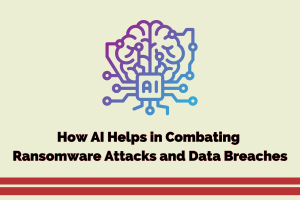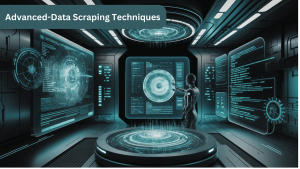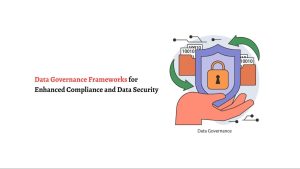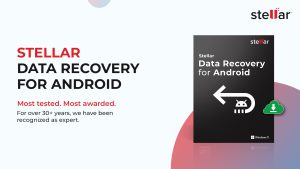Data Access Problems and Flexible Integration Solutions

Seamless integration platforms allow you to access new frontiers in the world of enterprise optimization.
You might be wondering if an ERP system is the next step for your enterprise. There’s no doubt that ERPs can be incredibly helpful for centralizing and streamlining behind-the-scenes business operations, but are they really a must-have for every business? To best answer this question, let’s first start with the basics.
What is enterprise resource planning technology? ERPs are built around the notion that real-time access to centralized information is the most crucial part of an effective organization. ERPs are a type of software that organizations use to manage day-to-day business activities. These activities can include everything from trimming duplicate data, project management, supply chain operations, to accounting and risk management.
ERPs work hand-in-hand with CRMs, with CRMs focusing on customer-related tasks and information. Seamless integration platforms such as Rapidi’s allow a business’s CRM and ERP to “talk” to one another, centralizing and standardizing information, and helping to solve data access issues within the organization. In other words, the full potential of any ERP or CRM is dependent on the quality of its integration with the other.
5 Ways that ERP Implementation Maximizes Your Business’s Potential:
- Scalability
- Increased Data Security & Risk Management
- Inventory Tracking & Quality Control
- Increased Productivity and and Resource Management
- Better Customer Relationships
Real-time data provided by ERPs allows for more predictive business results, and consequently, an increased rate of growth. Because you’ll never be without a plan, your business can adapt and grow with relative ease. Top-tier ERPs such as Microsoft Dynamics are able to scale to the levels mandated by their respective businesses, so you won’t have to worry about “outgrowing” your ERP system.
When it comes to the question of data security, top-tier ERPs are equipped with powerful security measures to keep sensitive information under wraps. Plus, when you integrate your legacy system with popular CRMs like Salesforce, years of investment in innovative security measures are part of the package deal.
When it comes to the subject of risk mitigation, it’s a given that every business habitually puts its money and resources on the line in the process of cultivating and disseminating its product or service. An ERP’s forecasting tools allow you to increase or decrease labor, resources, and attention as necessary to avoid over-or under-investing resources. An ERP also allows you to handle the minutiae of finances easily and legally. Industry regulations can be extremely exacting, and a high-end ERP system allows you to rest easy with its simple and accessible compliance management tools.
Tracking the flow of products and resources can be a consistent challenge, especially within larger companies managing a high volume of import and export materials. ERPs can track inventory through multiple means, so you can maintain visibility over your assets. ERPs also simplify supply chain management by centralizing logistics and distribution management. It can also analyze customer demand as well as pinpoint over-or under-stocked items, meaning you can better manage how your resources and inventory are allocated. You wield control over supply flow, and the ability to designate who sees what information. This allows materials, product, and data to move seamlessly between departments as needed, and minimizes human error.
ERPs can perform complex computations quickly, minimizing user error and allowing workers to turn their attention to innovation and creative or collaborative projects that require a human touch. However, no ERP would be complete without an accompanying CRM and an interlocking integration platform. Integration means reduced billing errors, streamlined customer service, automated reminders, expanded visibility, greater control, and heightened efficiency.
When an ERP is seamlessly integrated with a company’s CRM, or customer relationship management system, the two together allow management a 360 degree view of all important facets of their organization, with CRMs focusing on the “outward-facing” or customer orientated details. Let’s turn to a real-world example to demonstrate what exactly this all means.
KTBLACK Services and the Pursuit of Enterprise Optimization
KTBLACK Services, a staffing company providing skilled labor to employers around the United States, made use of Salesforce alongside Microsoft Dynamics GP for several years. Initially, pay data was sent between Salesforce and Dynamics GP via an XML-based process, but this was ultimately unsustainable; not only did the XML solution require specialized programming with each customization made in Salesforce, but the process was plagued with internal errors.
Isaac Veliz, an IT Specialist at KTBLACK, recalls that “the system would sometimes silently lock up, something that was often only discovered when someone entered something that was time critical, and realized that it wasn’t transferred to GP. We didn’t have any visibility into the problem, so our vendor would have to be called in to fix it, which could take a day or two.”
Clearly, something had to give. The process was further complicated by the fact that KTBLACK implemented a highly customized version of Salesforce, and their GP system was likewise altered. Because the XML-based system of data integration was so inflexible, every custom object required an alteration to the XML software, which could be quite time-consuming and quite inconvenient if an issue was time-sensitive.
While the innate flexibility of their CRM and ERP systems were a major boon, they were repeatedly frustrated by their ‘cookie-cutter’ XML-based system’s inability to transfer the data they needed.
Veliz recalls that “the XML process was slow at the best of times.” At the end of their rope, KTBLACK began researching an alternative. RapidiOnline stood out because of its custom integration capabilities and ease of use. Rapidi’s services require zero outside programmers or complex coding; KTBLACK employees can make the necessary changes themselves with minimal training.
Large scale operations such as KTBLACK—not to mention industry titans such as Spotify or Toyota—couldn’t function without an ERP organizing, filtering, and consolidating necessary data pouring in from all sides, saving actual employees countless hours of paperwork and inter-departmental scrambling. However, smaller businesses can also benefit from ERPs (and budget options do exist!), and the best ERPs are fully scalable to match the needs of most buyers.
Without seamless integration between CRM and ERP systems, problems can arise. One of the biggest issues that pre-integration enterprises run into is one of data access. Harmful siloing between departments can occur, leading to lots of horizontal redundancy as members of one department scramble to contact another in order to retrieve specific information. However, with solutions such as Rapidi at your side, data integration can be quick, painless, and rewarding.






